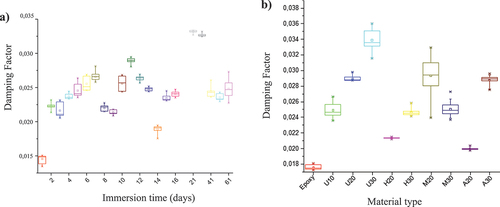Figures & data
Figure 1. Sonic test set-up: (a) Acoustic sensor model CADPS, (b) IED Automatic impulse device, (c) specimen.

Figure 2. Mass gain (M%) as a function of the square root of time (days 1/2) for the composites with untreated sponge fibers. The nominal fiber volume fraction of the composites is labeled on the curves. (a) Distilled water; (b) Salt water.
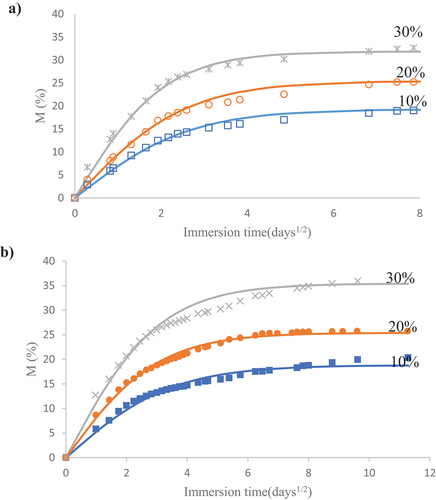
Table 1. Diffusion coefficient and mass saturation value for sponge gourd/epoxy composites immersed in distilled water.
Table 2. Diffusion coefficient and mass saturation value for sponge gourd/epoxy composites immersed in salt water.
Figure 3. Mass gain (M%) as a function of the square root of time (days1/2) for the composites with mercerized sponge fibers. (a) Distilled water; (b) Salt water.
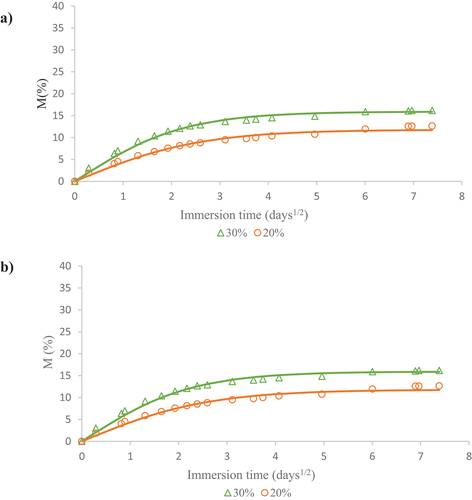
Figure 4. Variation of the Young’s modulus as a function of the immersion time in distilled water. (a) As-received fibers; (b) mercerized; (c) hornified; (d) acetylated.
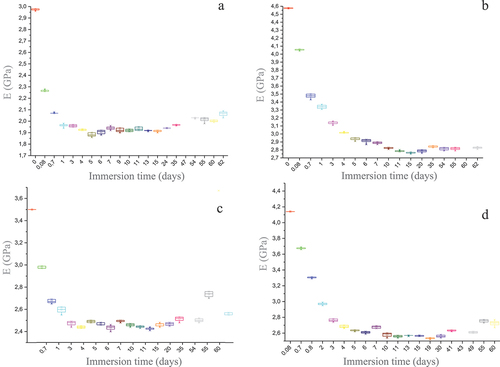
Figure 5. Composite with 20wt% of acetylated fibers immersed in distilled water. (a) variation of the Young’s modulus; (b) mass gain due to water absorption.
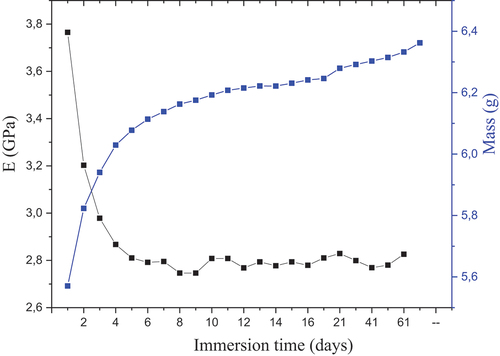
Figure 6. Variation of the elastic modulus before and after immersion in salt water and drying. U stands for untreated, H for hornified, M for mercerized and a for acetylated. The numbers refer to the volume fraction.
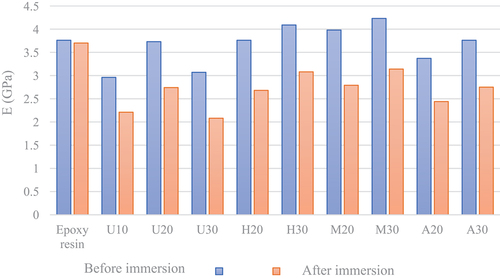
Table 3. Average values of the elastic modulus according to the time of immersion in salt water.

